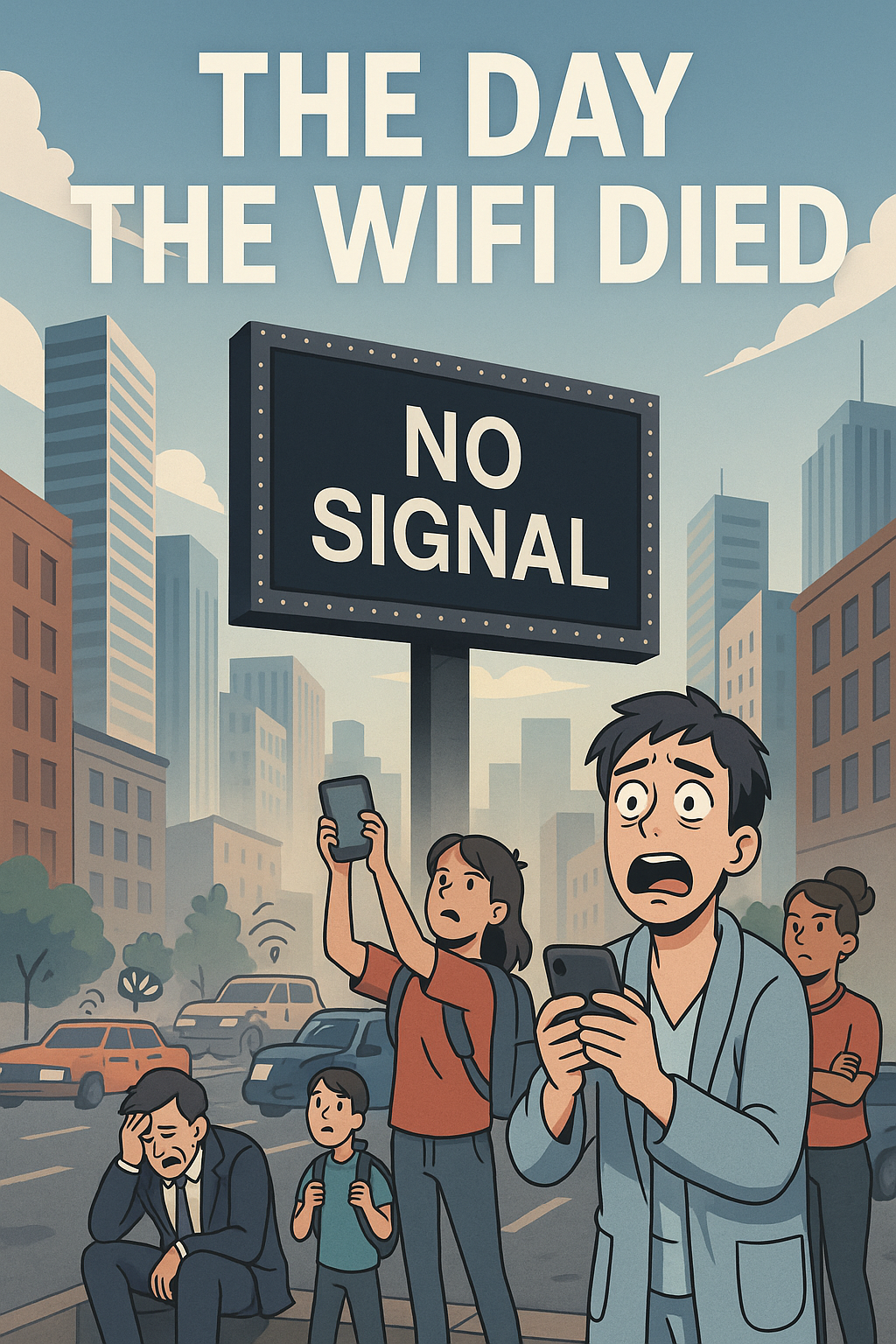THE STAGE 32 LOGLINES
Post your loglines. Get and give feedback.

THE DAY THE WIFI DIED (SHORT)
By B. E. Davis
When global WiFi collapses, a panicked man, his sarcastic roommate, and a ragtag group of neighbors form a cult-like movement to restore signal. Their quest spirals into chaos, proving humanity’s biggest outage may be its dependence on connection itself.
SYNOPSIS:
The Day the WiFi Died begins with a universal nightmare: the internet goes down everywhere. Phones freeze, billboards blink “NO SIGNAL,” and the city spirals into panic. Jason, an anxious thirty-something, immediately descends into hysteria, convinced that life without WiFi is impossible. His roommate Sandra, calm and razor-sharp, dismisses his melodrama — until they step outside and find the whole city unraveling.
The supermarket is a battlefield. Strangers barter frozen pizzas for hotspots. A woman clutches a router like a baby. Amid the chaos, Jason insists on buying an inflatable flamingo — which he believes will attract signal — and somehow becomes the reluctant leader of a growing mob.
As the outage spreads, the government scrambles. In the war room, the President is horrified to learn people are talking to each other “in person.” Meme lords and streamers are summoned as emergency advisors, but it is “Todd from IT,” cardigan-wearing and unassuming, who delivers the most radical plan: “turn it off and on again.”
Meanwhile, Jason’s block forms a bizarre coalition of neighbors: Gus, a doomsday prepper; Luna, an influencer-yogi; Nora, a gamer whose raid was canceled; Ty, a teenage meme savant; Dimitri, a pigeon enthusiast; and Ms. Rosa, a seventy-year-old armed with tamales and wisdom. They declare themselves “Signal Seekers” and attempt to build a citywide mesh network using routers, chalk slogans, and pigeons.
Through slapstick montages and escalating absurdity, their efforts culminate in a rooftop ritual where Jason, wielding the flamingo like a holy relic, nearly convinces the city they’ve regained signal — before it immediately drops again. Sandra, ever the pragmatist, pulls out a landline phone and proves old technology still works, undermining Jason’s cult-like status.
The climax arrives at the data center of Megacarrier, the ISP overlord. Inside a cavernous cathedral of servers, Todd from IT and Jason confront the ultimate choice: dare to flip the master switch. Surrounded by fearful advisors and apocalyptic warnings of “destabilizing the memescape,” Jason finally summons the courage to reset. For ten terrifying seconds, the world goes black — and then, bars return. The city explodes with joy.
Yet the real punchline comes when Jason and Sandra return home. On the fridge sits a note from their landlord: “WiFi: PrettyFlyForAWiFi / Password: 12345678.” The internet was never really gone. Jason, stunned, tries to spin it as profound: “The real WiFi was the friends we made along the way.” Sandra shuts him down with a deadpan: “Never say that again.”
As dawn rises, neighbors gather in the streets, some still glued to phones, others still laughing together. A digital billboard lights up: “YOU ARE NOW CONNECTED. DON’T FORGET TO BE.” A pigeon lands and poops on the word “FORGET.”
This is more than a comedy about technology — it’s a satire of modern dependence, a reminder of community, and an absurd celebration of resilience.

Rated this logline
Rated this logline
Rated this logline
Rated this logline
Rated this logline